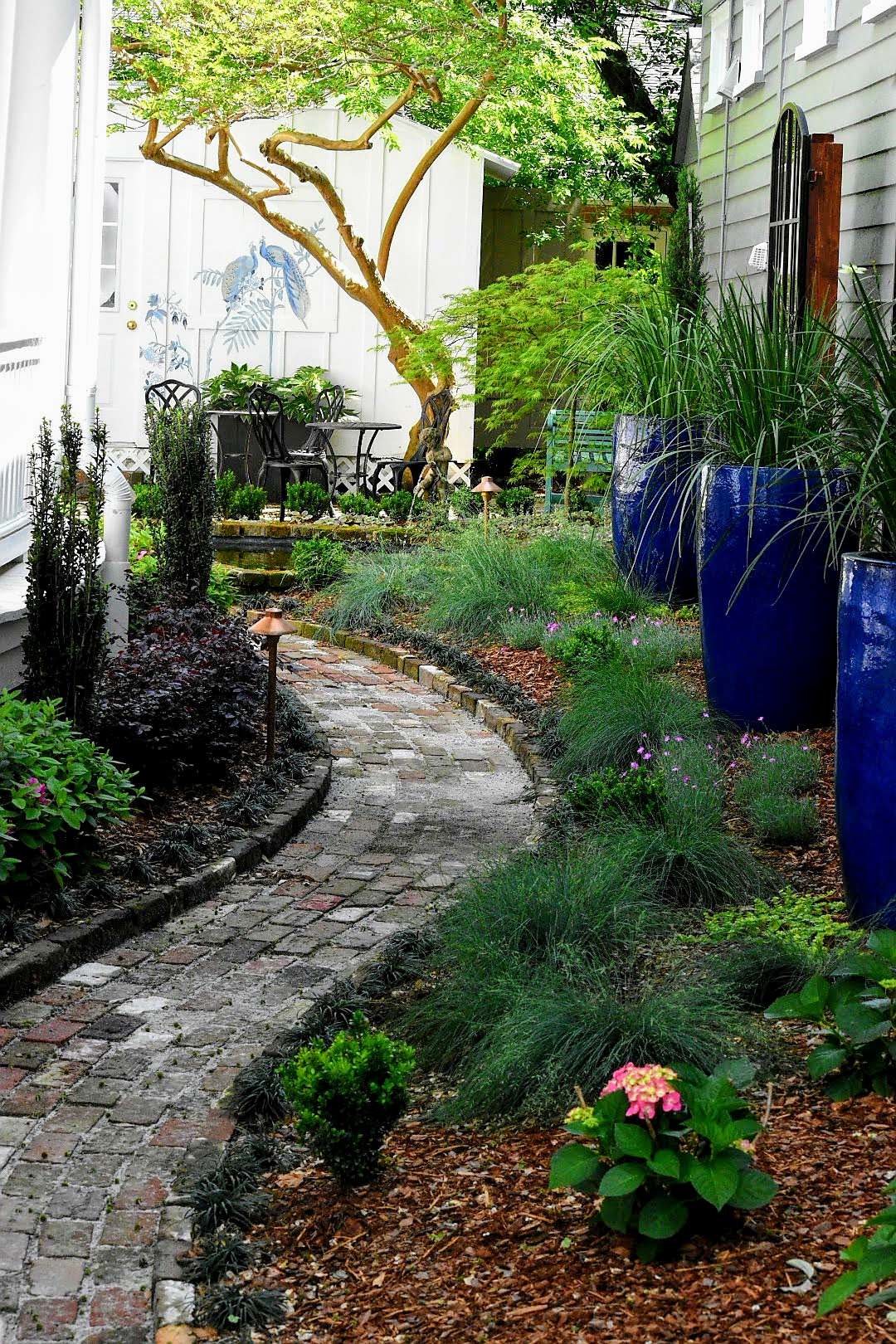The Function of Yard Layout in Supporting Sustainability and Biodiversity
Yard design is significantly acknowledged for its possible to promote sustainability and improve biodiversity within urban and country landscapes. By focusing on native plant species and employing water conservation methods, developers can develop settings that not just thrive but likewise require marginal chemical treatment.
Significance of Indigenous Plants
Highlighting the use of indigenous plants in yard style is essential for promoting ecological balance and sustainability. Native plants are those that normally occur in a particular region and have adjusted to the local environment, dirt, and wild animals. Their incorporation into gardens sustains local environments by offering environments and food resources for native pollinators, birds, and other wildlife.
Additionally, native plants are generally a lot more immune to local pests and conditions, lowering the requirement for chemical pesticides and fertilizers. This resistance not only reduces environmental effect however also lowers maintenance costs for garden enthusiasts. Indigenous plants usually require much less water than non-native types, lining up with sustainable gardening techniques and decreasing the strain on local water resources.
Water Preservation Strategies
Integrating indigenous plants not just enhances biodiversity but likewise plays a substantial duty in water preservation within garden layouts. Native species are adjusted to regional environment problems, needing less water than non-native equivalents. Landscape Designer. This particular minimizes the requirement for watering, saving both water sources and energy
Additionally, applying rainfall gardens can record and filter stormwater drainage, advertising groundwater recharge while lessening erosion. These gardens utilize indigenous plants that grow in wet conditions, efficiently handling excess water while developing varied habitats.

Another reliable technique is using permeable paving materials in pathways and patios, enabling rain to penetrate the ground instead than escaping. This advertises wetness retention and reduces the demand for irrigation.
Finally, mounting a rainwater harvesting system can considerably add to water preservation initiatives. Accumulating and storing rainwater for yard use motivates sustainable techniques and reduces reliance on municipal water sources (landscape designer near Daniel Island South Carolina). By integrating these methods, yard layouts can efficiently advertise water preservation while sustaining environmental wellness
Decreasing Chemical Usage
While many gardeners look for vivid and healthy plants, reducing chemical use is vital for promoting a sustainable environment. The reliance on synthetic plant foods and chemicals can cause soil deterioration, water contamination, and a decrease in beneficial insect populations. By taking on organic gardening practices, gardeners can improve the wellness of their landscapes while advertising biodiversity.
One efficient approach is to use garden compost and natural changes, which improve the soil normally and enhance its structure. landscape design near Goose Creek South Carolina. These practices not only increase plant wellness yet additionally decrease the need for chemical fertilizers - Landscape Designer. Carrying out integrated insect monitoring (IPM) techniques additionally decreases chemical inputs by motivating all-natural killers, such as ladybugs and parasitical wasps, to control pest populations
Furthermore, picking indigenous plant species can significantly minimize the requirement for chemical treatments, as these plants are much better adapted to neighborhood problems and are a lot more resistant versus insects and illness. By prioritizing sustainable techniques, garden enthusiasts can develop thriving environments that sustain both plant health and ecological community integrity, eventually causing gardens that are not only attractive yet also ecologically accountable. Lowering chemical usage is a crucial action in growing yards that honor and boost the natural globe.
Creating Wildlife Environments
Creating dynamic wild animals environments within yards not only boosts biodiversity however likewise enhances lasting horticulture practices focused on lowering chemical use. By integrating indigenous plants, gardeners can provide crucial sources such as food and sanctuary for various species, including birds, bugs, and tiny animals. Indigenous plants are well-adapted to neighborhood conditions, calling for less water and less chemical inputs, thus aligning with sustainability objectives.

Maintaining a naturalistic technique, which may include leaving some locations wild or undisturbed, permits the all-natural processes of ecological communities to grow. This practice motivates the visibility of valuable bugs and pollinators, which play a critical duty in the health of both yards and bordering environments. Generally, producing wild animals habitats is an essential element of sustainable garden design, promoting environmental balance and durability while boosting the charm and performance of exterior areas.
Neighborhood Engagement in Horticulture
Neighborhood interaction in horticulture fosters a feeling of belonging and collective responsibility, transforming individual gardening initiatives into shared initiatives that profit the entire area. By involving neighborhood members in gardening jobs, we can grow not just plants pop over to this web-site however also connections and socials media. Regional yards act as crucial spaces for education, where people of every ages can find out about sustainable practices, biodiversity, and environmental stewardship.
Collaborative gardening initiatives, such as community yards, advertise the exchange of expertise and resources, guaranteeing that all individuals can contribute and benefit. This inclusivity enhances neighborhood resilience, as participants interact to overcome obstacles such as food instability and environmental deterioration. Furthermore, community yards can serve as systems for social expression, permitting individuals to share their heritage with diverse growing and gardening strategies.
Moreover, engaging the neighborhood in gardening initiatives can lead to boosted understanding of local environments and the importance of biodiversity. By working collectively to style and preserve these rooms, citizens foster a common dedication to sustainability, producing a long-term influence on both the atmosphere and area cohesion. Inevitably, community engagement in horticulture is a powerful tool for advertising ecological stewardship and enhancing the lifestyle within communities.
Verdict
To conclude, strategic yard style substantially adds to sustainability and biodiversity. By highlighting making use of indigenous plants, carrying out water conservation techniques, and decreasing chemical inputs, yards can efficiently sustain regional ecosystems. Additionally, the development of wild animals habitats and fostering community interaction even more boost environmental stewardship. Collectively, these techniques not only enrich the beauty of areas yet likewise advertise eco-friendly balance, making garden layout a crucial aspect in the pursuit of a sustainable future.
Comments on “Budget-friendly Landscape Design Solutions to Transform Your Outside Locations”